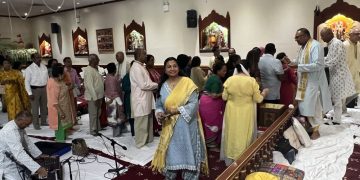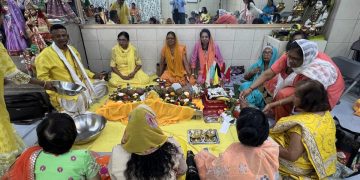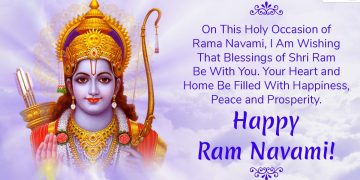Originally from the Caribbean, I am a West Indian-American classical archaeologist with a background in the ancient Mediterranean, especially, Greek and Roman history, and archaeology. I research Alexander the Great, ancient monuments, military and ancient Greek coins. I have excavated in Europe, researched and investigated sites in India and spoken at many conferences in the Caribbean particularly on history, Bharat (India) and the diaspora. However, my ancestors are from India. Hundreds of thousands of Indians came during the British occupation of India to the West Indies region of the Caribbean. We practice our Hindu religion and have maintained our culture here against insurmountable odds. Yet we still see India as the spiritual and ancestral motherland, our holy land. Therefore, growing up I was always interested in India’s history and I would read anything I could find on it. Off course, the mainstream history books, media, documentaries and material available were very scant on India and came from only a western and outdated colonial perspective. Basic news about India was trifling, there was always complete radio silence, except for the old trope about poverty, caste and cows. Even now, Indology is governed by only a selected few universities across America. For the longest while I had read about the Aryan Invasion Theory but there were always many lingering questions that could not be answered by the mainstream ideas concerning Indology, things that didn’t add up, things that seemed more than a bit off.
This is why Major General Dr. Gagandeep Bakshi’s Book ‘The Sarasvati Civilisation’ is a game changer, a paradigm shift as he aptly calls it. The Sarasvati Civilisation is such an incredible and invaluable piece of work in the rising India of today. The book provides a refreshing holistic insight into the theories surrounding the Aryan Rig Vedic Civilisation by answering a plethora of questions about Bharat’s (India’s) astoundingly ancient civilisation and its continuity into modern times with an avalanche of empirical evidence and scientific corroboration through the rediscovery and analysis of the mighty Sarasvati River referred to in the eternal Vedas.
Major-General Bakshi demolishes the religiously held belief of the Aryan Invasion Theory as advocated by the colonial historians and zealously upheld by a circus of Macaulayan-bred Marxist elites who stomp on India’s history with an iron fist and allow no other perspective or rebuttal of their claims to breathe. These actions alone by the mainstream historians as I’ve come to understand, through my own observations on India, are never spoken about in the West but decry a suspicious stranglehold on India’s history.
General Baskhi sheds light on many enduring questions including a final nail on the Aryan Invasion Theory and the Indo-Aryan Migration Theory vindicating the more plausible Out of India Theory: that India’s Aryan Rig Vedic Civilisation was indigenous and most likely spread from India, outwards to the west. What was the culture of the ancient so-called Indus Valley or more accurately, the Sarasvati Civilisation? Where is the original Aryan homeland? Were the Indus-Sarasvati Aryan people indigenous to the land or foreign invaders? He answers all in his work. Interestingly even the naming of the Indus Valley Civilisation as the reader will come to find out is a misnomer given that most of the settlements are to be found along the Sarasvati not the Indus which western historians are in complete denial of since it bulldozes their self-certified authority on India’s history.
The tome comprises 13 sweeping chapters encompassing a meticulous and comprehensive examination of a multidisciplinary approach utilized to provide evidence for the arguments presented in favor of the indigenous Aryan Rig Vedic Civilisation and the confirmation of the Sarasvati river’s existence. The book calls upon a legion of evidence including satellite imagery, geological, archaeological, scriptural, linguistic, genetic, carbon dating, cultural continuity and many more verifications as well as important specific examples of ancient artifacts and the elusive soma.
General Bakshi’s book details for us how satellite and geological evidence has brought the Sarasvati back to life from the shadows of mythology with proof that it was a living river, not something the rishis had imagined in the Vedas. He reveals the many statistics of the Sarasvati such as its staggering 4600kms length until its reduction and desiccation around 1900 B.C.E. Satellite pictures give us visual evidence of the existence of a once mighty river, its sources and paleochannels while isotopic dating of the trapped water indicate it was as old as the Harappan Civilisation. The geological evidence provided in the book tells us what happened to the Sarasvati river and why it dried up. Consequently, why would Aryans invade or migrate to a land undergoing desertification and an environmental disaster? The book rationalizes that even more ancient geological phenomena was probably alluded to in the Vedas by “stolen rivers” imprisoned by the Dragons Ahi and Vritra whose waters were then rescued by the God, Indra. The ex-military author delves head on into such glaring questions not even attempted by the colonial history mules.
The General spent a great deal on the chapter dealing with archaeological evidence. He discusses from the time Stone Age hunter gatherers had begun to settle down in some of the earliest settlements from Mehrgarh, Balochistan to Birrhana, India dated to about 9 500 B.P. (Before Present) which shows signs of the indigenous growth of agriculture and animal rearing. He lists all the distinct stages of Harappan culture that existed and how its vast area of about 2 million square kilometers covered from Afghanistan to Uttar Pradesh including vast cities like Mohenjo-Daro and Rakhigiri, the latter being part of the Kurukshetra area. General Bakshi discusses the civilisational core area and how it relates to the Rig Veda and the great Das Rajan War (Battle of the Ten Kings) fought by the Bharatiyas under King Sudas. He also reviews important archaeological aspects such as quantitative analysis of geospatial distribution sites with its 2 378 Harappan-styled settlements spread across Northwest India, distinct ceramic traditions such as ochre colored pottery and painted grey ware culture, pyrotechnology and sophisticated city planning. One noteworthy characteristic he examines is how the Harappan civilisation, the contemporary of the other two Mesopotamian and Egyptian civilisations, while highly sophisticated, does not show the same monarchial system of governance but something that resembles a more egalitarian outlook. The chapter then details the advanced technology possessed by the Harappan civilisation such as civic amenities, mathematics, water management and other creations. It is amazing how much ancient Indo-European history were are not privy to in the west.
General Bakshi then seamlessly pieces together the evidence of cultural continuity from ancient to modern times to establish the identity of the people at the Indus-Sarasvati sites through various means of terracotta figurines, jewelry, religious practices, yoga, traditional gestures and others. He demonstrates they were quite similar to the modern Hindu. This is further confirmed by scriptural proof provided by the author found in a multitude of Hindu texts including the Vedas, Brahmanas and Mahabharata. The sacred texts display the vast geographical knowledge of the Vedas glorifying the Mother river including the profound Nadi Sukta (RV 10.75.5), “O Ganga, Yamuna, Sarasvati…” which lists why it was Sapta-Sindhu (land of seven rivers), vindicating such oral traditions of the Vedas.
In classical archaeology, I studied various modern and ancient Indo-European languages therefore I felt General Bakshi’s table of comparative Indo-European words in the chapter on linguistics were quite commendable providing another basis for the Out of India hypothesis. He also delivered intriguing connections to be found among the histories of the Hittites and the Mitannis who had called upon the Vedic Gods.
General Bakshi certainly gets to the crux of the matter with his chapters on carbon dating and DNA mapping: dates. Dates provide a more precise verification compared to anecdotal markers in the scriptures and sacred narratives. The Aryan civilisation of India is to say for the very least, old. Some of the findings could push Bharat’s history to approximately 10 000 years B.P. The more fascinating artifacts, however, include the Bhagpat Chariot found at a site with the same name dating back to the era of the Mahabharata. The chariot was older than the supposed Aryan Invasion at around 1500 B.C.E. Make sure and read the book to find out these amazing dates! General Bakshi’s remarks on DNA mapping evidence shows that the people were native to the region despite the various lengths colonial and desperate modern historians have gone to comprising bizarre explanations just to surpass the glaring truth that the Indo-Aryans were indigenous to the region unlike what Max Muller and Mortimer Wheeler had originally proposed. His analysis of the DNA evidence answers many questions I had concerns about. These answers are typically conveniently left out by the mainstream historians in their assessment which makes for an enticing read. All the more reason to have a copy of this book.
As with any good General he quickly makes a thorough assessment of what needs to be done after all scientific evidence has been sorted. He offers further solutions for a Grand Narrative in India amongst other resolutions such as a Copenhagen-styled convention and a multidisciplinary approach in the final chapters. The General even bespeaks of the possibilities of bringing the mighty Sarasvati back to life! And they are noteworthy! As General Bakshi appropriately states, “There is something unique in this civilisation of ours that its essence, its individuality can never be destroyed even after centuries of invasions and persecutions. No other civilisation in the world can hold a candle to us.”
The Sarasvati Civilisation is a well-documented research that calls upon the work of many an esteemed and accomplished scholar and their compendium of methodical efforts to make its arguments including the likes of renowned scholars such as Professor Vasant Shinde who gives a delightful foreword, Dr. B.B. Lal and Dr. David Frawley.
Major General Dr. Gagandeep Bakshi SM, VSM is a son of the soil and a decorated military veteran receiving no less than the Vashisht Seva Medal and the Sena Medal serving in the prestigious Jammu and Kashmir Rifles. The author of over 35 books, he is versatile as he is Veer (brave) packing a PhD in Military History as well. General Bakshi is extraordinarily equipped and qualified to bring us this oeuvre on Indian history.
My evaluation on India is as I recently wrote, “India’s history has always been written and controlled by academics with a colonial anti-India, anti-Hindu agenda using deliberately designed narrow perspectives. History has been used as a tool for suppression and control.” In his book Sarasvati Civilisation, General Bakshi clearly drives his point home in every chapter and is reminiscent of the principal arguments. He explicitly articulates the political motivations by the colonisers and their intent to usurp India’s history as a means to divide and rule the people by every dissonance and difference they could exploit to justify their actions and colonial rule. This is discussed in the introduction on the colonial engineered historiography and its basic axioms, the inherent contradictions of the Aryan Invasion Theory along with other colonial and modern foreign constructs. These ideologies continue to ensconce the people in a colonised mentality spearheaded by modern carriers of the British Raj impeding India’s abilities to move forward. It is time for India to grab hold of its history unapologetically. As I had also explained in my work, “History constitutes everything in our past and defines us. Our future progress depends on understanding our origins.” Additionally, “Bias, prejudice and agenda can overtake and build an ecosystem with a hostile narrative to the detriment of a particular ethnic group that entrenches them further in a colonial mindset proving more difficult to escape than the physical shackles of slavery.”
India is reincarnating as one of the planets great power players and taking its rightful place alongside the world’s giants. As India begins to flex and navigate its economic and military abilities it must cement its place on a foundation of its own ancient heritage from a native Indic perspective and let its potential flow like the powerful and potent Sarasvati river. General Baskhi’s book signals that a new age of Indology has dawned on India. This is a must have book for every Indian household both in India and our Indian diaspora around the world. It is time to illuminate the truth. It is time the Indo Caribbean diaspora started understanding how our history was manipulated by colonial historians and continues to be manipulated by academic forces today trying to wrestle control of Indian Hindu history from Indian Hindus to deter them from the truth. To combat the perversion of our history we must educate ourselves on all aspects of the debate. Aryan Invasion Theory is a myth. Indians and their Hindu Civilisation are both indigenous to India. Our history is our responsibility. Hats off to the General who has defended India with the sword and the pen!






































































